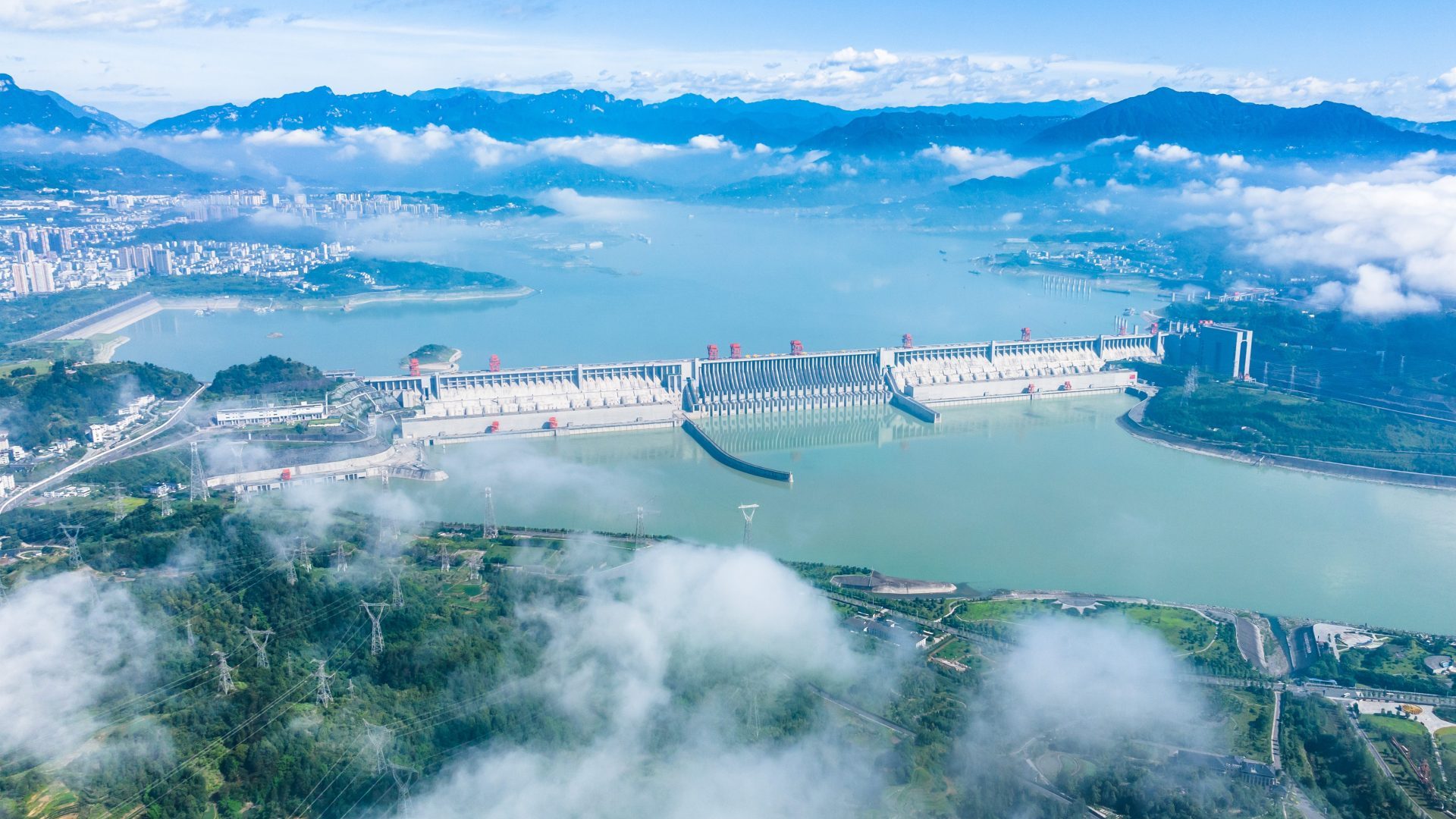China is embarking on a $167 billion hydroelectric dam project. The mega-dam along the Yarlung Tsangpo river in Tibet could become the world’s largest renewable energy project.
Chinese state engineers estimate the dam has the potential to generate 70 gigawatts of electricity — more than the total power capacity of Poland. The project will consist of five cascade dams around the city of Nyingchi in southeast Tibet, with engineers planning to straighten some of the river’s bends and divert water through tunnels, according to a report by Bloomberg.
The massive construction effort promises to deliver an economic jolt to key industries while advancing China’s goal of reducing emissions in the electricity production sector. China hopes to complete the dam by 2033. But the project threatens to escalate tensions with neighboring India and Bangladesh. Environmental groups have also raised concerns over the impact on biodiversity.
What are the benefits of China’s mega-dam?
The project is a major economic opportunity. Citigroup analysts estimate that the mega-dam could boost China’s economic growth by almost 0.1 percentage point — roughly $17.8 billion — in its first year of construction, delivering benefits to the construction, cement and steel sectors.
Stock markets reacted to the announcement with the Power Construction Corporation of China and the China Energy Engineering Corporation hitting their daily 10% trading limits in Shanghai, while China Energy Engineering’s Hong Kong shares surged 51%. Huaxin Cement more than doubled in Hong Kong before giving up some gains.
Beyond the economic boost, the project aligns with China’s clean energy objectives. The hydroelectric power generated could help the country achieve its goal of reaching net-zero emissions by 2060 by providing a massive new source of renewable energy.
China has built massive dams before, most notably the $37 billion Three Gorges Dam, completed in 2009, which remains the world’s largest hydroelectric facility when measured by installed capacity.
How will this affect relations with India?
The Yarlung Tsangpo flows through Arunachal Pradesh, a state in northeast India with over 1.4 million residents, feeding into the Brahmaputra River, which continues into Bangladesh. India expressed its concerns about the project to China in December 2024. Officials from India fear the mega-dam could cause their rivers to dry up or lead to flooding, depending on how China manages the project.
Unbiased. Straight Facts.TM
China’s Three Gorges Dam, the largest hydroelectric dam in the world, produces eight times more electricity than the Hoover Dam does in the U.S.
Arunachal Pradesh Chief Minister Pema Khandu warned that China could use the dam as a “water bomb.”
According to an article published by the BBC, Khandu said, “Suppose the dam is built and they suddenly release water, our entire Siang belt would be destroyed.” He added that the Adi tribe and similar groups “would see all their property, land, and especially human life, suffer devastating effects.”
The mega-dam project comes at a delicate time for the world’s two most populous nations. In June 2020, a border clash killed about 20 Indian soldiers and at least four Chinese. While direct conflict has not continued, India is positioning itself as Asia’s alternative to China as a manufacturing hub, aiming to counter Beijing’s growing global influence.
What are the environmental risks?
The Yarlung Tsangpo gorge, where the river drops 6,500 feet over a 31-mile stretch, is home to a national nature reserve. Known as one of China’s top biodiversity hotspots, the gorge contains more than 4,500 plant species.
The construction also poses seismic risks in one of the world’s most earthquake-prone regions. The dam is planned between two tectonic plates, just 300 miles from where the strongest earthquake ever recorded on land struck in 1950. The project could disrupt sediment flows and accelerate coastal erosion, making the river’s vast delta more vulnerable to sea-level rise, according to an article in Yale Environment 360.
Environmental concerns have been largely set aside in favor of the project’s economic and energy benefits. Beijing has promised to implement measures that ensure safety and environmental protection, claiming there will be no adverse impacts on downstream areas.
